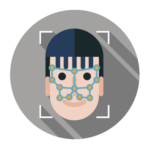The United States Air Force (USAF) will be installing SAFR’s computer vision technology in unmanned ground vehicles (UGVs) to enhance its perimeter security and search and rescue operations. SAFR’s technology is being delivered through a Small Business Innovation Research (SBIR) contract that builds on the two other SBIR contracts the company received in August.

Those previous contracts also leveraged SAFR’s facial recognition tech for security purposes, though they placed the tech in IP security cameras and other fixed and mobile devices with embedded cameras. The third SBIR contract, on the other hand, concerns the aforementioned UGVs, which will extend the USAF’s reach beyond the base. For example, the UGVs can patrol contested territory to watch for any unauthorized individuals, and send alerts back to command if they spot anything that requires immediate attention.
The USAF can also send the UGVs into hazardous areas to get the lay of the land and search for survivors after disaster events like earthquakes. Doing so can make search and rescue operations safer and more efficient, since emergency medical personnel will know exactly where they need to go and how to get there. As a result, they will no longer need to waste time sifting through rubble while climbing over unstable (and unsafe) terrain.
The UGVs themselves are based on NVIDIA Jetson AGX Xavier technology. The SAFR system, meanwhile, runs entirely on the UGV, so it can function in areas with poor network coverage. In such cases, the UGV will gather footage and then generate a patrol report when it returns to base, though it can stream surveillance data in real-time in places with better infrastructure.
“We see this as an incredible opportunity to demonstrate how AI is a force multiplier and can be used to reduce risk to security forces and emergency responders,” said SAFR Senior Product Manager Eric Hess. “The UGV platform equipped with SAFR AI represents the future of embedded device operations and computer vision for an emerging range of robotic systems.”
SAFR recently updated its facial recognition platform to improve its passive liveness detection capabilities. The company’s tech has since turned up in Geutebrück’s G-Core VMS.
–
April 27, 2021 – by Eric Weiss








Follow Us